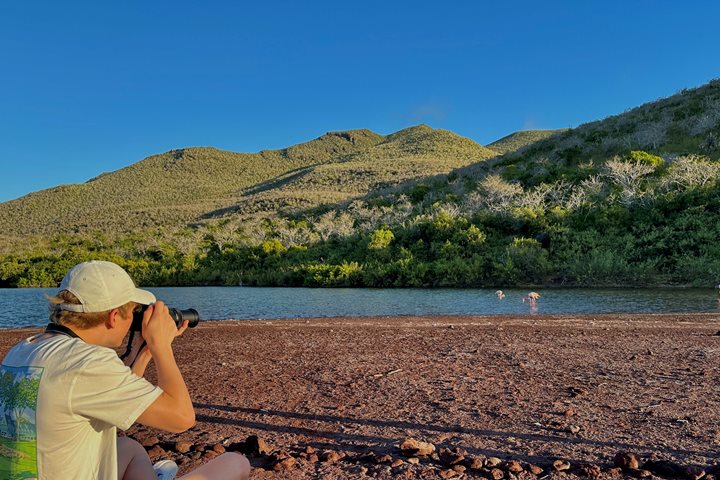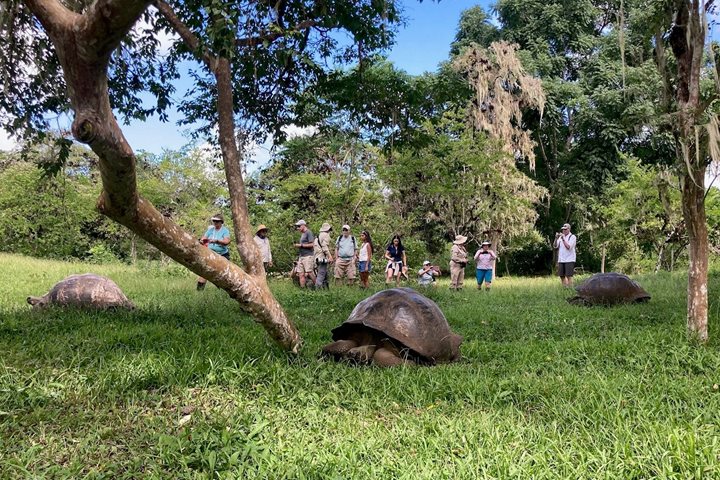We woke up to a view of Puerto Ayora, the largest town in the Galapagos. After breakfast, we had a dry landing at the pier of Puerto Ayora, and we boarded buses towards the highlands of Santa Cruz Island. The area was quite humid and green, and we walked around the Scalesia forest (giant daisy trees). The flora in this area of the island is evergreen; it is different from the arid zone we previously explored along the coast.
We stopped around a couple of pit craters (collapse magma chambers), and we had the opportunity to learn about the geology of this middle-aged island. After exploring the milky forest and the Twin Holes, we headed off to visit the natural habitat of the Santa Cruz giant tortoises.
Over the millennia, giant tortoises migrated to this land. Farmers once used the land for cow farms, and today it is used for ecotourism. We arrived at a ranch known as “El Manzanillo,” and we explored the area. At least a hundred tortoises were scattered around the greenery and a couple rainwater ponds.
We also spotted a few Galapagos mockingbirds, common gallinules, and white-cheeked pintail ducks. We were extremely lucky to find a couple woodpecker finches. After a full morning, we visited the tortoise breeding center, part of the Galapagos National Park. We learned about different conservation projects in place to restore the dynasty of the Galapagos giant tortoises.
We observed lots of baby tortoises as well as some species of endemic finches feeding off the flowers of prickly pear cacti.







